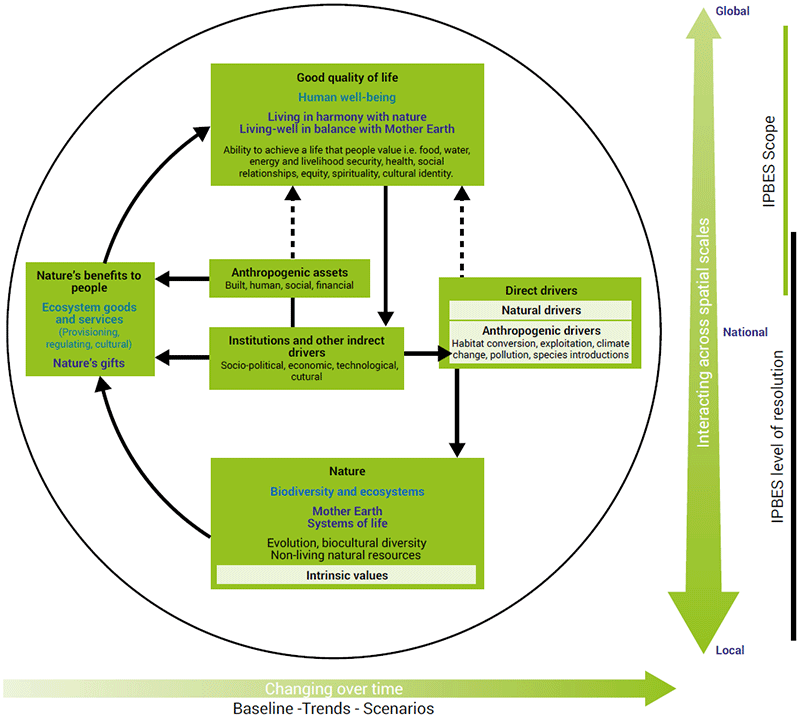Biodiversity – the “variability among living organisms from all sources including … diversity within species, between species and of ecosystems” (United Nations 1992, Article 2) – helps regulate climate through carbon sequestration and control of local rainfall, filters air and water, and mitigates the impact of natural disasters such as landslides and coastal storms. Direct benefits include food and fibres from natural vegetation, wood and non-wood products from forests, fish from oceans and freshwater systems, pollination of crops, medicines from plants, and psychological health (Clark et al. 2014; Harrison et al. 2014; World Health Organization [WHO] and Secretariat of the Convention on Biological Diversity [SCBD] 2015, p. 200; Pascual et al. 2017). Never before have we known so much about the biodiversity that enables ecosystems to function (Cardinale et al. 2012), yet biodiversity loss and habitat decline continues to accelerate, potentially beyond planetary boundaries (Tittensor et al. 2014; Steffen et al. 2015).

Current rates of species loss are estimated to be 1,000-fold greater than background rates (Pimm et al. 2014), sparking debate among scientists over whether we have already entered into a sixth mass extinction event (Barnosky et al. 2011; Ceballos, Ehrlich and Dirzo 2017). For many species, populations are in decline globally (Ceballos, Ehrlich and Dirzo 2017; McRae, Deinet and Freeman 2017), and genetic diversity – vital for future adaptation to global change – is eroding (Food and Agriculture Organization of the United Nations [FAO] 2015a). Natural communities of plants and animals are being reshaped through climate change and human-mediated movement of species (Pacifici et al. 2015); some displaced species are invasive, posing risks to human health, genetic diversity, and food and water security. These changes seem likely to reduce the efficiency by which ecosystems are able to capture essential resources, produce biomass, decompose and recycle nutrients (Cardinale et al. 2012), and decrease the resilience of ecosystems (MacDougall et al. 2013). The restoration and maintenance of biodiversity will enhance adaptive potential, and help sustain nature’s contributions to people’s livelihoods, health and well-being (Intergovernmental Science-Policy Platform on Biodiversity and Ecosystem Services [IPBES] 2016). These critical services are frequently neglected as they largely bypass the market and there are no clear price signals for them (e.g. Foale et al. 2013; Seddon et al. 2016; Costanza et al. 2017). The loss of biodiversity is also a significant equity issue: the livelihoods of 70 per cent of people living in poverty rely to some extent on natural resources (Green Economy Coalition 2012, p. 4); 80 per cent of global biodiversity is found in the traditional territories of indigenous peoples (Sobrevila 2008, p. xii); and future generations will experience relatively impoverished lives if losses continue (Naeem et al. 2016).